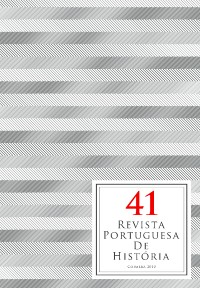Please use this identifier to cite or link to this item:
https://hdl.handle.net/10316.2/9701| DC Field | Value | Language |
|---|---|---|
| dc.contributor.author | Moriceau, Jean-Marc | - |
| dc.date.accessioned | 2013-03-08T09:59:21Z | |
| dc.date.accessioned | 2020-10-05T00:47:54Z | - |
| dc.date.available | 2013-03-08T09:59:21Z | |
| dc.date.available | 2020-10-05T00:47:54Z | - |
| dc.date.issued | 2010 | - |
| dc.identifier.issn | 0870-4147 | - |
| dc.identifier.uri | https://hdl.handle.net/10316.2/9701 | - |
| dc.description.abstract | Alors que des oppositions s’élèvent entre partisans et adversaires du loup, la question de la dangerosité du prédateur sur l’homme laisse perplexe. À quoi correspond l’image négative du prédateur? Quelle contribution l’historien peut-il apporter selon ses sources et ses méthodes de travail? À l’issue d’une collecte de 5 400 cas d’attaques sur l’homme, survenues surtout entre 1580 et 1880, on saisit la chronologie et la distribution spatiale du risque. Avérées mais anciennes, statistiquement faibles mais anthropologiquement insupportables, ces agressions opposent en fait les loups prédateurs, qui considèrent l’homme comme une proie occasionnelle, et les loups enragés qui frappent la population sans discernement. Récurrentes dans un environnement peu sécurisé, les attaques des premiers ont donné corps à la croyance aux «Bêtes féroces», au cours d’épisodes dramatiques (1594-1600, 1693-1694, 1746-1750, 1764-1767, 1814- -1819). Davantage circonscrites dans le temps et dans l’espace, les attaques des seconds ont semé une psychose d’autant plus durable qu’elles annonçaient une maladie incurable jusqu’au dernier tiers du XIXe siècle. La confusion entre ces deux ordres de réalité a forgé, pour Canis Lupus, une image négative qui se délite depuis qu’elle s’est éloignée – pour le cas de la France – de toute matérialité. | fra |
| dc.description.abstract | In a context of stark opposition between defenders and opponents of the wolf, the extent to which this particular predator is dangerous for humans is still an open question. What lies beneath the negative perception of the wolf ? What should be the historian’s contribution, based on historical sources and historical methods ? Thanks to a database of 5,400 cases of wolf attacks on humans having occurred in France between 1580 and 1880, it is now possible to grasp the chronological evolution and spatial evolution of wolf-related risks. Undeniably real, though mostly belonging to a remote past, and statistically rare, though anthropologically intolerable, these attacks point to two opposite groups, predatory wolves ocasionally preying on humans on one hand, rabid wolves striking indiscriminately a whole population on the other. The attacks of the first kind occured regularly in an unsafe environment, and gave rise to tales of «Ferocious Beasts» in times of dramatic crisis (1594-1600, 1691-1694, 1746-1750, 1764-1767, 1814-1819). The second kind was spatially and chronologically less widespread, but sowed the seeds of mass hysteria, all the more persistent since the underlying sickness it forebode remained without a cure before the last third of the XIXth century. The confusion between these two different realities gave Canis Lupus its negative aura, significantly dimmed recently however since it has entirely lost its material basis, at least in France. | eng |
| dc.language.iso | fr | - |
| dc.publisher | Instituto de História Económica e Social, Faculdade de Letras da Universidade de Coimbra | - |
| dc.subject | Predatory wolf | eng |
| dc.subject | Rabid wolf | eng |
| dc.subject | Ferocious beast | eng |
| dc.subject | Historical methodology | eng |
| dc.subject | Animal dangerosity | eng |
| dc.subject | Anthropophagous risk | eng |
| dc.subject | Loup prédateur | fra |
| dc.subject | Loup enragé | fra |
| dc.subject | Bête féroce | fra |
| dc.subject | Méthodologie historique | fra |
| dc.subject | Dangerosité animale | fra |
| dc.subject | Risque anthropophagique | fra |
| dc.title | Un problème d’environnement rural: La dangerosité du loup en France. Du Moyen Âge au xxe siècle | fre |
| dc.type | Article | - |
| uc.publication.collection | Revista Portuguesa de História nº 41 | - |
| uc.publication.firstPage | 11 | - |
| uc.publication.issue | 41 | - |
| uc.publication.lastPage | 32 | - |
| uc.publication.location | Coimbra | - |
| uc.publication.journalTitle | Revista Portuguesa de História | - |
| dc.identifier.doi | 10.14195/0870-4147_41_1 | - |
| uc.publication.section | Núcleo temático: História Rural | - |
| uc.publication.orderno | 3 | - |
| uc.publication.manifest | https://dl.uc.pt/json/iiif/10316.2/9701/269011/manifest?manifest=/json/iiif/10316.2/9701/269011/manifest | - |
| uc.publication.thumbnail | https://dl.uc.pt/retrieve/12143054 | - |
| item.grantfulltext | open | - |
| item.fulltext | With Fulltext | - |
| Appears in Collections: | Revista Portuguesa de História | |
Files in This Item:
| File | Description | Size | Format | |
|---|---|---|---|---|
| 01_-_jean-marc_moriceau.pdf | 4.85 MB | Adobe PDF |  |
Items in DSpace are protected by copyright, with all rights reserved, unless otherwise indicated.
